After catching prey using a box trap, you will perform a "stop stabbing" to finish off the prey.
If you capture it with a tying trap, the beast can move as much as the length of the wire after capture, but with a box trap, the beast's movement is restricted to the inside of the cage.
Also, in the case of tying traps, the legs of captured prey may come out of the wire for some reason. On the other hand, box traps are less likely to escape prey after being caught, so it can be said that the level of difficulty of stopping them is lower than that of tying traps.
That said, since it's done against the wild, box traps aren't completely risk-free.
Large wild boars in particular are in a state of excitement after being caught, and are so powerful that they can move box traps by ramming them. Before performing the stop stabbing, carefully observe the condition of the trap from a distance and confirm that there are no damages or other abnormalities in the box trap.
Here's another article
Wild Boar Capture ~ Let's set up and patrol box trapsStop stabbing procedure after capturing a box trap
Now, I will explain specifically how to stop the prey captured by the box trap.1. stabbing directly with a knife
Tamezashi using a knife is a method of piercing the heart or carotid artery with a knife and exsanguinating blood. It has been used as a popular stopping method for a long time because it has fewer restrictions than other stopping methods. However, it is a method with high hurdles both physically and mentally because it is necessary to stab a knife in a vital point.
The difficulty is to expose the chest (the base of the heart), which is the vital part. Boars and other quadrupedal animals have their chests facing the ground, making it difficult to aim at their vital points. Therefore, it is necessary to make the chest of the prey visible.
One method is to use restraints such as ropes to restrain the animal's nose and front legs by lifting them vertically.
Let's take a wild boar as an example and explain.
First, make the retainer into a loop. At this time, tie a knot so that the loop tightens when the retainer is pulled (for example, a trap knot).
Insert the above ring from the gap in the box trap ceiling. If you wiggle the ring around the boar's snout, it will bite, so pull the rope at that moment to tie the boar's neck and upper jaw.
Alternatively, place the ring on the ground and pull it up as soon as your front foot enters the ring. If you can tighten the loop well, put your weight on the rope on the handle side and pull it.
By doing this, the retained part will not leave the box trap. In addition, in the case of a heavy individual, it will be easier to lift it by hooking it on a branch of a nearby tree and then putting your weight on it.
In this state, the prey's front legs float and the prey stands up on its hind legs, exposing its chest and making it easier to aim for vital points. The less risky method is to use a spear-shaped knife with a long reach in this state.
Here's another article
All-purpose machete, fukuronagasa charmIn the case of small wild boars, it is sometimes possible to catch the boar by hand as soon as the boar's legs stick out of the net of the box trap and stop the stabbing, without using restraints. I can't recommend it without it.
When you strike a vital point, it is an image of a quick thrust. Pull out the blade as soon as you poke it, check the situation, and if blood flows out, it is a success. If you do it right, you can kill it in less than a minute. However, do not approach it carelessly until you can confirm that it is dead.
2. use an electric killer
The electric killer is a method of bringing a spear-shaped electrode into contact with the prey using a small battery, etc., and stopping the heart with an electric shock. Since it is less difficult than stabbing with a knife and you don't have to see blood, it has been adopted by many hunters in recent years and is often seen in the field.
On the other hand, if you make a mistake, the operator will get an electric shock, so you need to be very careful when handling it. As a premise, absolutely avoid using it on rainy days. Also, when energized, be careful not to point the tip of the spear at people or touch the box trap.
1) First, when using an electric killer, wear insulating rubber gloves and rubber boots to prevent yourself from being electrocuted (high-voltage insulating type is recommended). Wear long sleeves and long pants to minimize skin exposure, and tuck sleeves and trouser hems into rubber gloves.
2) Next, connect the ground to the metal part of the box trap. If the connection part is corroded and rusted, or if it is painted with paint, it will be difficult for electricity to pass through, so it is a good idea to sand it with a file before setting the box trap.
Also, make sure the tip of the spear you use to pierce your prey is clean of dirt, blood, and rust.
3) Be careful as the rods and needles of the electric killer may break due to the wild boar's violent impact. If the prey is moving and it is difficult to aim, before inserting the spear, insert an iron pipe or wood into the box trap to limit the range of movement so that the prey does not move around, and guide it to the entrance side. To do.
If the animal's movements cannot be restrained, it is a good idea to pre-restrain the animal using a restraint. Also, before using the electric killer, sprinkle water on the ground or the boar that the box trap is in contact with to make it easier for electricity to pass through.
4) Turn on the electric killer, take aim and pierce the spear. If you want to stun your prey, aim for the neck of a boar, or the head of a deer. When electrocuting, aim as close to the heart as possible.
At this time, if your body touches the box trap, you may get an electric shock, so be careful. Also, if the spear part of the electrode touches the steel frame while current is flowing, a short circuit will occur, so be careful.
5) After stabbing, make sure the prey is completely dead due to electrocution. If the prey is just fainting in a state of shock, the prey will wake up and go on a rampage, leading to an accident. To check if you're dead
- The boar closed its eyes, its pupils opened
- I was relieved from stiffness, and the strength of my whole body was gone
- stopped breathing
Please check items such as Even if you can confirm the above, the possibility of resurrection is not zero, so it is better to stop it with a knife at the end.
3. stabbing with a gun
A stabbing with a gun is the least likely to be counter-attacked by the beast. But that doesn't change the fact that the gun itself is a dangerous tool.
It is important to pay close attention and pay attention to safety when working. Specifically, there is a danger that the bullet will hit the frame of the box trap and ricochet. When firing a gun, place the muzzle on the frame of the trap to help stabilize your aim.
Also, in order to prevent accidents caused by stray bullets, be sure to check if there are any houses or people at the end of the muzzle. Be sure to secure the backstop (a shield that prevents the bullet from going beyond the range).
If you are traveling with someone, take a position behind the gun owner and, if possible, hide behind a tree for safety. In addition, the following conditions must be met when stabbing a trapped animal with a gun.
- When the movement of a bird or animal caught in a trap cannot be reliably fixed.
- Birds and animals caught in traps are ferocious and may endanger the lives and bodies of those who capture them.
- Conducted based on the consent of the hunter, etc. who set the trap
- Ensure safety in using firearms
- be registered as a hunter
- In the case of extermination of harmful birds and beasts, etc., permission to capture with firearms and certification must be obtained.
If possible, it is better to check in advance with the department in charge of the local government to see if the location where the stabbing is to be done is not in a specific hunting gear prohibited area (gun-free area).
When aiming with a gun, aim for the head, neck, or heart of a deer, or the temples (behind the ears) or the heart of a boar. If you are planning to use it as meat, be careful not to aim at the abdomen, as the fragments of the bullet will dig into the internal organs and limit the area that can be used.
Four. suffocate
When small prey is caught in a box trap, the method of suffocating and stabbing is also used. Specifically, there are methods such as using gas or submerging the whole box trap.
In addition, small animals such as raccoons and nutria, which are specific alien species, are prohibited from being transported and must be stabbed at the place of capture. In the case of control under the Invasive Alien Species Law, it is obliged to cause as little pain as possible to captured individuals, so after setting up traps, frequent patrols should be made, and after capture they should be disposed of in an appropriate manner.
suffocate with gas
When asphyxiating with gas, place the trap in a sealed container and inject carbon dioxide. Leave it as it is for about 10 minutes to suffocate. Carbon dioxide gas is generally injected from a dedicated cylinder.
When using a large box trap, it is not suitable because the size of the container and the preparation of gas are large, but it can be said that it is an effective method for a small size box trap.
Submerge the whole box trap
When small prey is captured, there is also a method of suffocating the prey by submerging it with the box trap. The box trap is submerged in a river where the water depth can be secured, and fixed so that it will not be washed away. Let it sit for about 10 minutes and wait for it to suffocate.
If the water is shallow enough to catch your breath, the fish will struggle to breathe, which can actually cause prey to suffer. I would like to choose a place where the water depth can be secured and take care not to suffer as much as possible.

 箱罠
箱罠
 くくり罠
くくり罠
 パーツ類
パーツ類
 電気柵
電気柵
 自作キット
自作キット
 防獣グッズ
防獣グッズ
 監視カメラ
監視カメラ
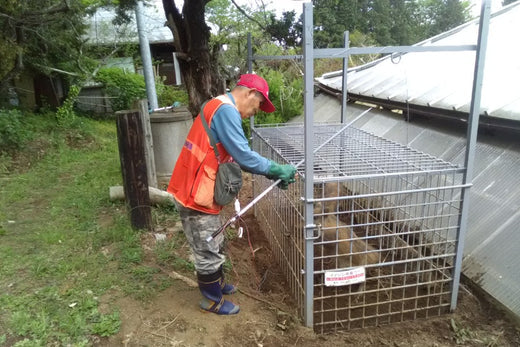
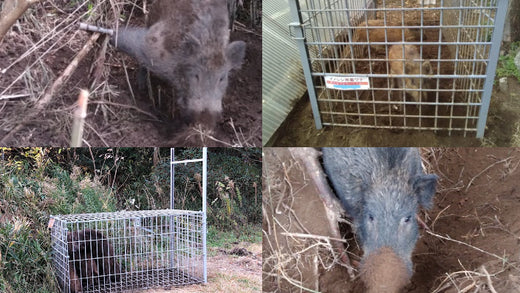
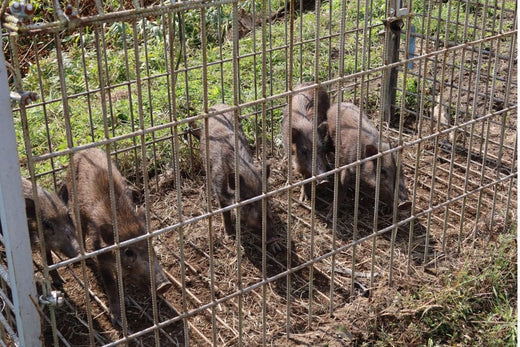
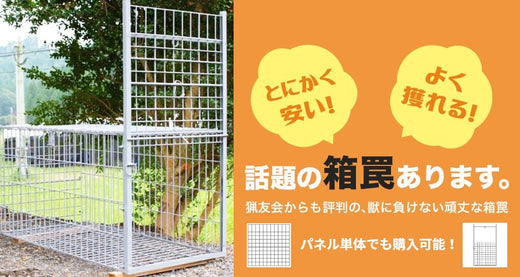
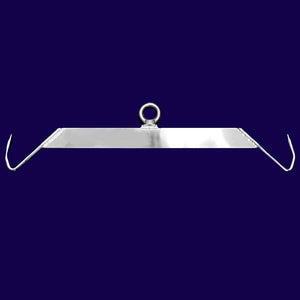
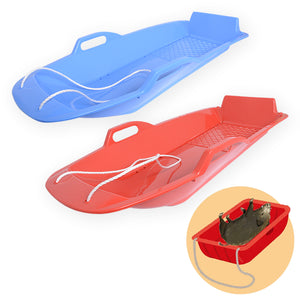
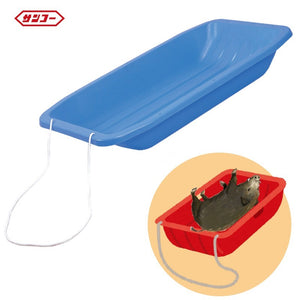

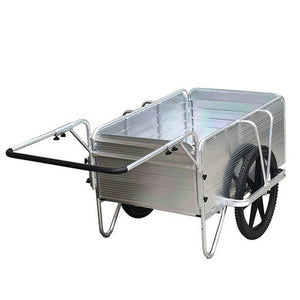
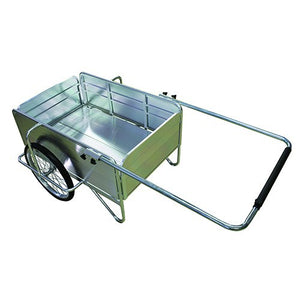
 box trap
box trap
 tying trap
tying trap
 enclosure trap
enclosure trap
 Prevention and avoidance goods
Prevention and avoidance goods
 electric fence
electric fence
 trap surveillance camera
trap surveillance camera
 transportation goods
transportation goods
 Trap detection sensor
Trap detection sensor
 hunting supplies
hunting supplies
 hunting books
hunting books
 Anti-bird goods
Anti-bird goods
 Agricultural materials/machinery
Agricultural materials/machinery
 boar
boar
 deer
deer
 Kyon
Kyon
 monkey
monkey
 raccoon
raccoon
 Badger
Badger
 palm civet
palm civet
 raccoon dog
raccoon dog
 nutria
nutria
 mouse or rat
mouse or rat
 Mole
Mole
 bear
bear
 pigeon
pigeon
 Crow
Crow







